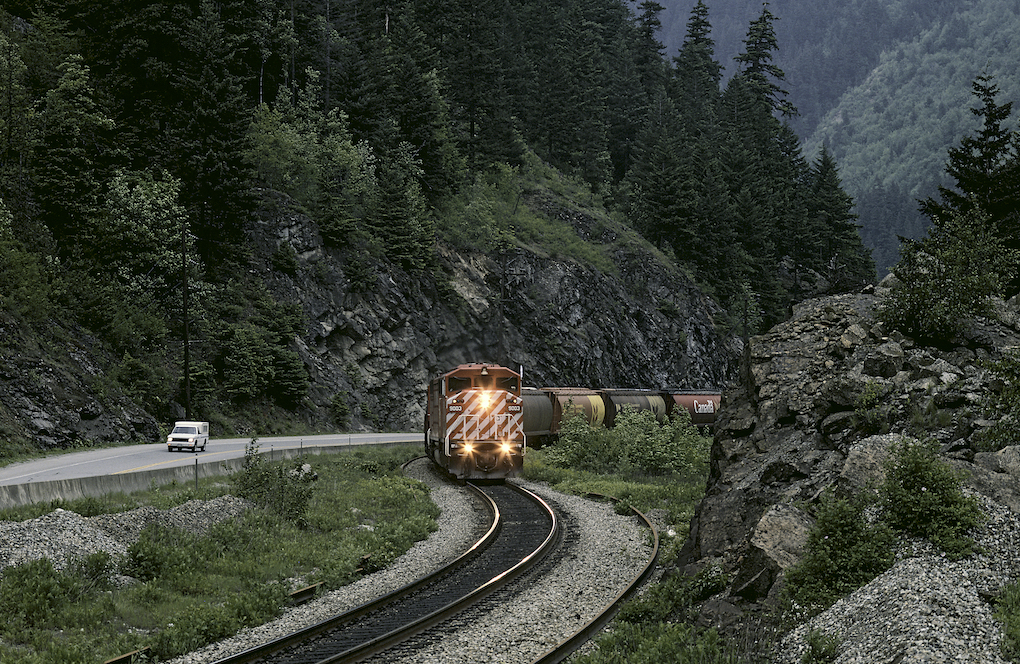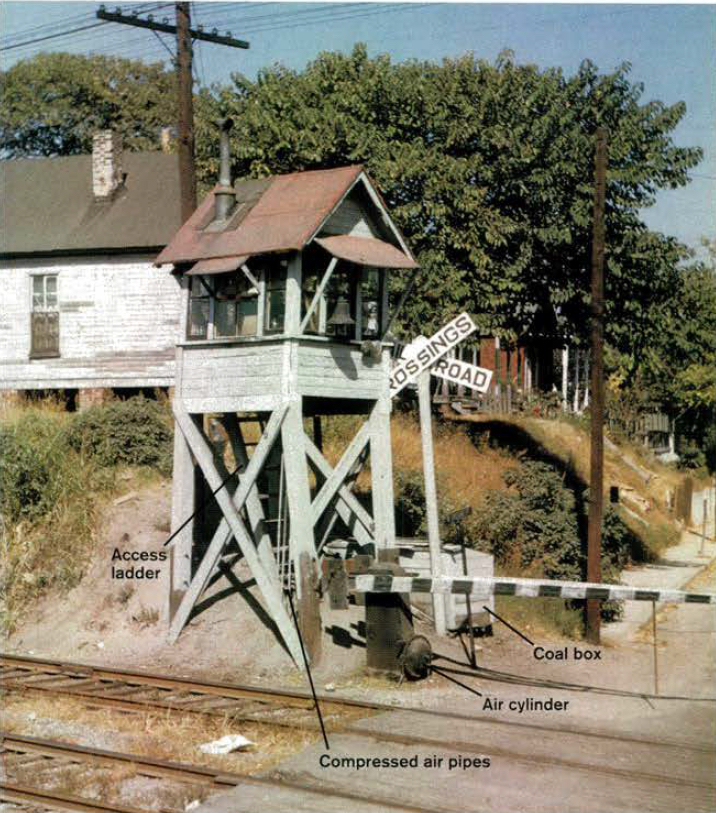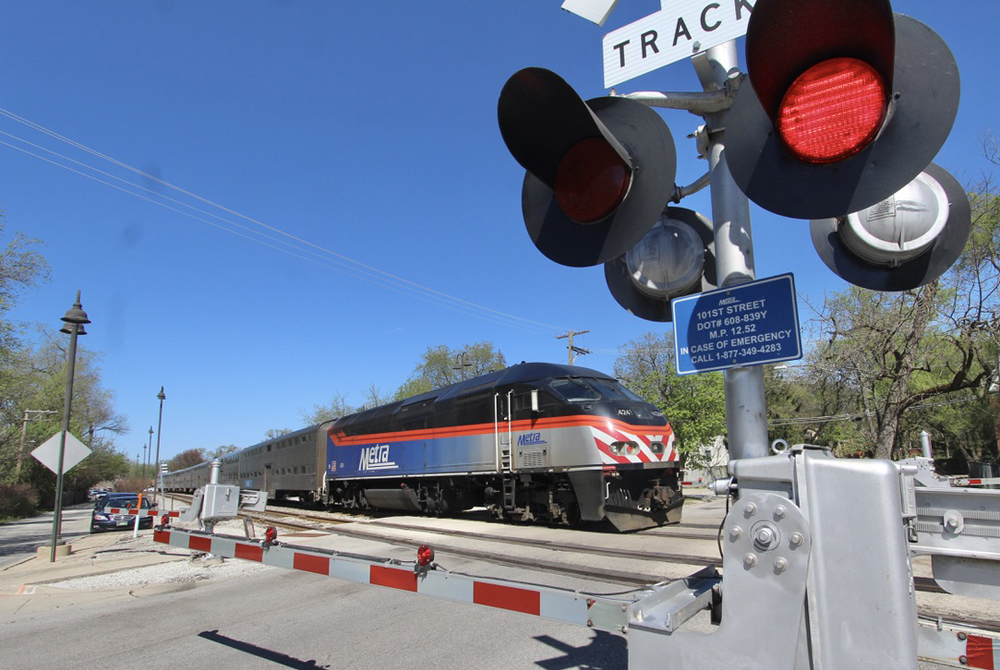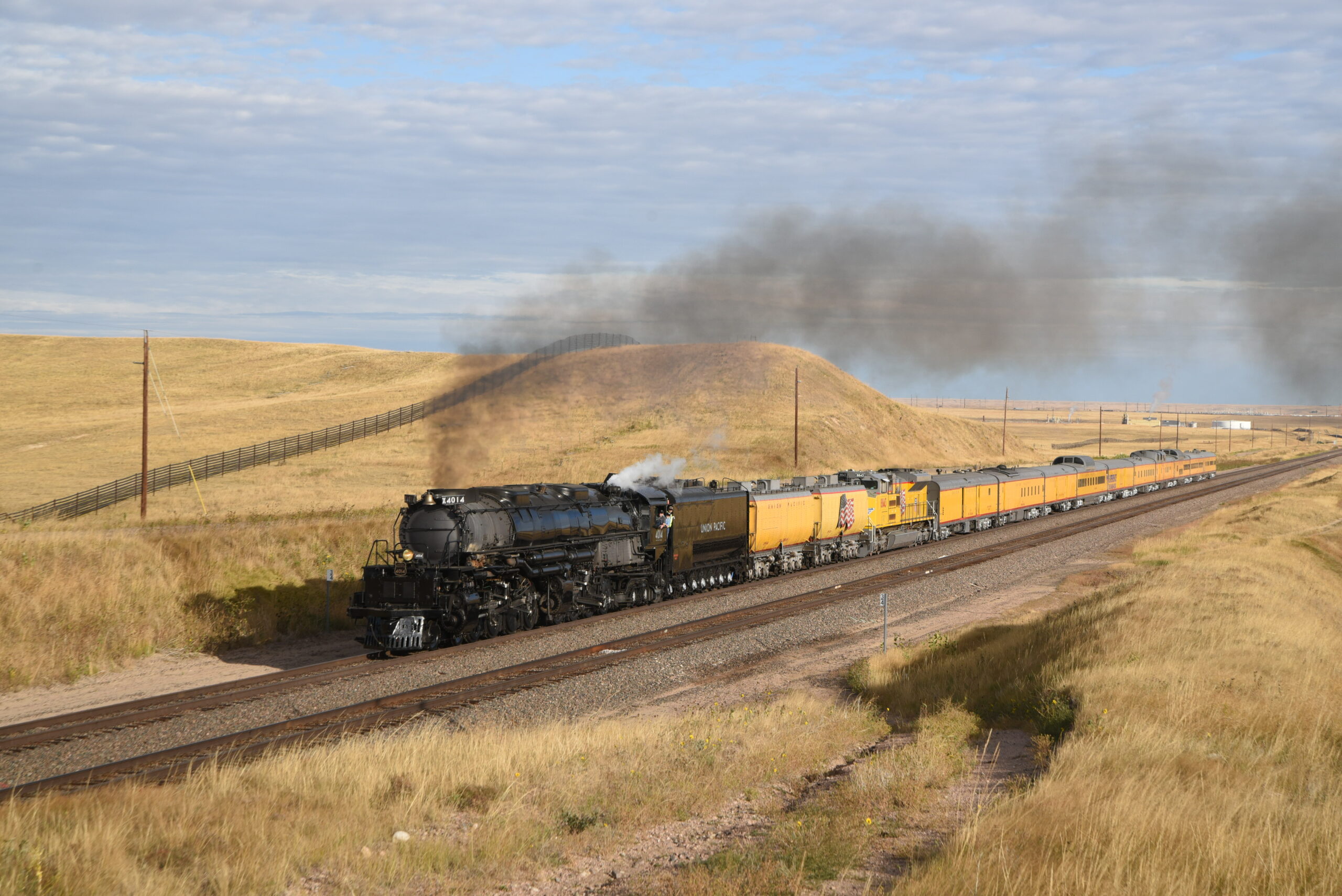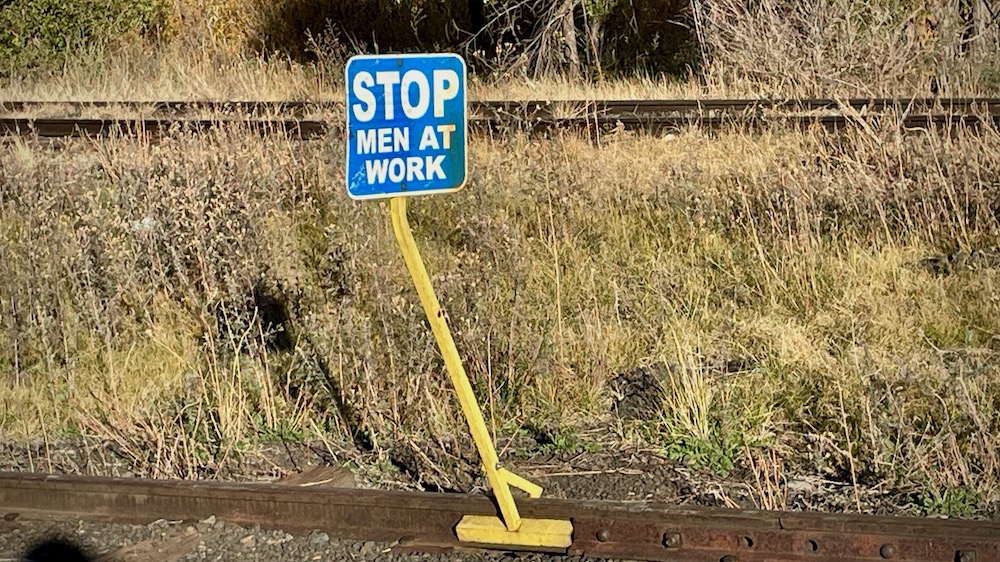
We’ve all seen blue flags. A sign with words “STOP MEN AT WORK” clamped to the head of a rail, or hanging from the side of a locomotive. It was placed there by a railroader working in the area, and the rules of its use are strict and unbending.
A blue flag, is defined by General Code of Operating Rules or GCOR, Eighth Edition, Rule 5.13 as a signal that “signifies that workmen are on, under, or between rolling equipment…” It allows car department and mechanical personnel to protect themselves from equipment rolling onto the track and striking the cars or engines that they are working on. The rule further details that nothing can be coupled to trains under blue signal protection, that rolling equipment can’t pass or block the view of a blue signal, nor can controls or devices on the equipment being protected be operated except under the direction of the employees that placed the blue signal.
GCOR explains how blue signal protection needs to be applied. On a main track, the employees need to place a blue flag on either side of the train, however, on other than main track, such as a yard, the rule provides for several options. On a siding, each switch providing access must be lined away from the track to be protected and locked with an “effective locking device” and a blue flag at each switch. Derails accompanied with blue flags can also be utilized and locked in the derailing position either 150 feet from the equipment being protected or 50 feet from the equipment if it is on an engine servicing or car shop repair track with a speed limit of 5 mph.
If an engine is attached to the equipment being worked on, a blue signal is required to be placed in view of the engineer. The locomotive may not be moved, nor can its controls and brakes be operated unless directed by the employees in charge of the blue flag.
Blue flag protection has been around for a long time, and while the rules regarding it have changed, the definition has remained the same. The oldest rule I could find regarding a blue signal was from Southern Pacific’s Rules and Regulations from July 1882 which stated, under Rule 38, “A blue flag by day and a blue light by night, placed at the end of a car, denote that car inspectors are at work under or about the car or train. The car or train thus protected must not be coupled to, or moved, until the blue signal is removed by the car inspectors…”
Sound familiar? The most important part of the blue flag rule, no matter when in time, is that only the workgroup that placed the blue flags, lights, and locks may remove the flag. Just remember when you see a blue flag, workman are under or between the train, keep them alive.
For more technical information, read “Blue flags.”






